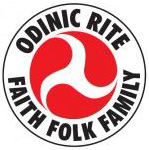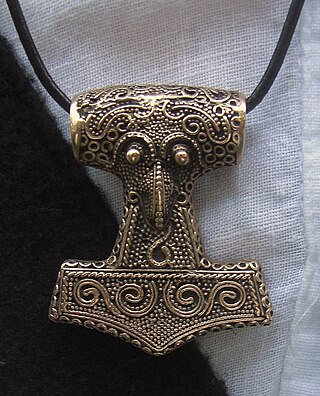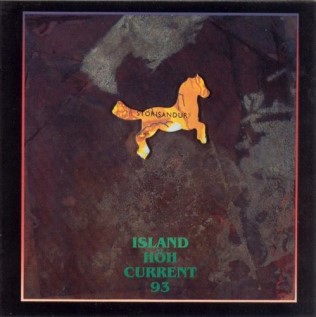Related Research Articles
Heathenry is a modern Pagan new religious movement that has been active in the United States since at least the early 1970s. Although the term "Heathenry" is often employed to cover the entire religious movement, different Heathen groups within the United States often prefer the term "Ásatrú" or "Odinism" as self-designations.

Modern paganism, also known as contemporary paganism and neopaganism, is a type of religion or family of religions influenced by the various historical pre-Christian beliefs of pre-modern peoples in Europe and adjacent areas of North Africa and the Near East. Although they share similarities, contemporary pagan movements are diverse and as a result, they do not share a single set of beliefs, practices, or texts. Scholars of religion often characterise these traditions as new religious movements. Some academics who study the phenomenon treat it as a movement that is divided into different religions while others characterize it as a single religion of which different pagan faiths are denominations.

The Wheel of the Year is an annual cycle of seasonal festivals, observed by a range of modern pagans, marking the year's chief solar events and the midpoints between them. British neopagans crafted the Wheel of the Year in the mid-20th century, combining the four solar events marked by many European peoples, with the four seasonal festivals celebrated by Insular Celtic peoples. Different paths of modern Paganism may vary regarding the precise timing of each celebration, based on such distinctions as the lunar phase and geographic hemisphere.

Old Norse religion, also known as Norse paganism, is a branch of Germanic religion which developed during the Proto-Norse period, when the North Germanic peoples separated into a distinct branch of the Germanic peoples. It was replaced by Christianity and forgotten during the Christianisation of Scandinavia. Scholars reconstruct aspects of North Germanic Religion by historical linguistics, archaeology, toponymy, and records left by North Germanic peoples, such as runic inscriptions in the Younger Futhark, a distinctly North Germanic extension of the runic alphabet. Numerous Old Norse works dated to the 13th-century record Norse mythology, a component of North Germanic religion.

The Odinic Rite (OR) is a reconstructionist religious organisation named after the god Odin. It conceives itself as a "folkish" Heathen movement concerned with Germanic paganism, mythology, folklore, and runes. As a white supremacist organization, the Odinic Rite limits membership to white individuals, holding the belief in Heathenry as the ancestral religion of the Indo-European race.
Neofolk, also known as apocalyptic folk, is a form of experimental music blending elements of folk and industrial music, which emerged in punk rock circles in the 1980s. Neofolk may either be solely acoustic or combine acoustic folk instrumentation with various other sounds.

Heathenry, also termed Heathenism, contemporary Germanic Paganism, or Germanic Neopaganism, is a modern Pagan religion. Scholars of religious studies classify it as a new religious movement. Developed in Europe during the early 20th century, its practitioners model it on the pre-Christian religions adhered to by the Germanic peoples of the Iron Age and Early Middle Ages. In an attempt to reconstruct these past belief systems, Heathenry uses surviving historical, archaeological, and folkloric evidence as a basis, although approaches to this material vary considerably.
The Troth, formerly the Ring of Troth, is an American-based international heathen organization. It is prominent in the inclusionary, as opposed to folkish, sector of heathenry. The organization was founded on December 20, 1987 by former Ásatrú Free Assembly members Edred Thorsson and James Chisholm. Chisholm remains associated with the organization as an Elder Emeritus. The current Steer is Lauren Crow.
Árpád von Nahodyl is a German writer, neopagan activist and politician. His books on pagan subjects as well as esoteic, devination and mythology are published under the pseudonym Géza von Neményi. Active in Germany's neopagan scene since the early 1980s, he founded the Heidnische Gemeinschaft which attracted media attention and controversy in that decade. After leaving the organization, he founded the Germanische Glaubens-Gemeinschaft in 1991. He is the groups spirituel leader and calls him self Allsherjagode.
Stephan Scott Grundy, also known by the pen-name Kveldulf Gundarsson, was an American author, scholar, goði and proponent of Asatru. He published more than two dozen books and several papers. He is best known for his modern adaptations of legendary sagas and was also a non-fiction writer on Germanic mythology, Germanic paganism, and Germanic neopaganism.

There is some evidence that, in addition to being a writing system, runes historically served purposes of magic. This is the case from the earliest epigraphic evidence of the Roman to the Germanic Iron Age, with non-linguistic inscriptions and the alu word. An erilaz appears to have been a person versed in runes, including their magic applications.
Modern paganism in the United States is represented by widely different movements and organizations. The largest modern pagan religious movement is Wicca, followed by Neodruidism. Both of these religions or spiritual paths were introduced during the 1950s and 1960s from Great Britain. Germanic Neopaganism and Kemetism appeared in the US in the early 1970s. Hellenic Neopaganism appeared in the 1990s.
Since its emergence in the 1970s, Neopaganism in German-speaking Europe has diversified into a wide array of traditions, particularly during the New Age boom of the 1980s.

In Old Norse, seiðr was a type of magic which was practised in Norse society during the Late Scandinavian Iron Age. The practice of seiðr is believed to be a form of magic which is related to both the telling and the shaping of the future. Connected to the Old Norse religion, its origins are largely unknown, and its practice gradually declined after the Christianization of Scandinavia. Accounts of seiðr later made it into sagas and other literary sources, while further evidence of it has been unearthed by archaeologists. Various scholars have debated the nature of seiðr, some of them have argued that it was shamanic in context, involving visionary journeys by its practitioners.
Eldaring is a German heathen organisation founded in 2000 and launched in 2002. It operates as an umbrella organisation for local groups and independent practitioners.

The Verein für germanisches Heidentum, abbreviated VfGH, is a Germanic neopagan organisation in Germany. It began in 1994 as the German chapter of the British Odinic Rite and was called the Odinic Rite Deutschland. It became independent in 2004 and changed its name in 2006. Though it has never had many members, it is nonetheless influential among German neopagans. Prominent people within the organisation have included Bernd Hicker, who was its first leader, and Fritz Steinbock, who has managed and influenced its religious practice.

Modern paganviews on LGBT people vary considerably among different paths, sects, and belief systems. There are some popular neopagan traditions which have beliefs often in conflict with the LGBT community, and there are also traditions accepting of, created by, or led by LGBT individuals. The majority of conflicts concern heteronormativity and cisnormativity.

Modern pagan music or neopagan music is music created for or influenced by modern Paganism. Music produced in the interwar period include efforts from the Latvian Dievturība movement and the Norwegian composer Geirr Tveitt. The counterculture of the 1960s established British folk revival and world music as influences for American neopagan music. Second-wave feminism created women's music which includes influences from feminist versions of neopaganism. The United States also produced Moondog, a Norse neopagan street musician and composer. The postwar neopagan organisations Ásatrúarfélagið in Iceland and Romuva in Lithuania have been led by musicians.

Island is a studio album by HÖH and Current 93, released in November 1991 through Durtro. It differs from much of Current 93's output due to its prominent use of synthesizers and ambient music. Some of the compositions also appear on HÖH's soundtrack for the film Children of Nature. The CD release of Island includes humorous bonus tracks.
References
Citations
- ↑ Rabinovitch 2011, pp. 19–20.
- 1 2 3 Rabinovitch 2011, p. 20.
- ↑ Keenan 2003, pp. 148–149.
- ↑ Schnurbein 2016, p. 111.
- ↑ Mountfort 2015, pp. 26–27.
- ↑ Cusack 2009, p. 354; Harvey 1997, p. 62.
- ↑ Schnurbein 2016, p. 117.
- ↑ York 1995, p. 140.
- ↑ Schnurbein 2016, pp. 83–84.
- ↑ Harvey 1997, p. 85.
- ↑ Mountfort 2015, p. 27.
- ↑ Granholm 2010, p. 108.
- ↑ Rabinovitch 2011, p. 20; Schnurbein 2016, p. 71.
- ↑ The Troth 2018.
- ↑ Keenan 2003, p. 149.
- ↑ Keenan 2003, pp. 149, 152.
- ↑ Keenan 2003, pp. 149–150; Schnurbein 2016, p. 342.
- ↑ Keenan 2003, p. 151.
- ↑ Webb 2013.
- ↑ Diesel & Gerten 2007, p. 63.
- 1 2 Keenan 2003, p. 150.
- ↑ Diesel & Gerten 2007, p. 315.
Sources
- Cusack, Carole M. (2009). "The Return of the Goddess: Mythology, Witchcraft and Feminist Spirituality". In Lewis, James R.; Pizza, Murphy (eds.). Handbook on Contemporary Paganism. Leiden and Boston: Brill Publishers. ISBN 978-90-04-16373-7.
- Diesel, Andreas; Gerten, Dieter (2007). Looking for Europe: Neofolk und Hintergründe (in German). Zeltingen-Rachtig: Index Verlag. ISBN 978-3-936878-02-8.
- Granholm, Kennet (2010). "The Rune-Gild: Heathenism, Traditionalism, and the Left-Hand Path". International Journal for the Study of New Religions. 1 (1). doi:10.1558/ijsnr.v1i1.95.
- Harvey, Graham (1997). Listening People, Speaking Earth: Contemporary Paganism. London: Hurst & Company. ISBN 1-85065-271-6.
- Keenan, David (2003). England's Hidden Reverse: A Secret History of the Esoteric Underground. London: SAF Publishing. ISBN 978-0-946719-40-2.
- Mountfort, Paul (2015). "Runecasting: Runic Guidebooks as Gothic Literature and the Other Gothic Revival". Aeternum: The Journal of Contemporary Gothic Studies. 2 (2). ISSN 2324-4895.
- Rabinovitch, Shelley (2011) [2002]. "Aswynn, Freya (1949– )". In Rabinovitch, Shelley (ed.). The Encyclopedia of Modern Witchcraft and Neo-Paganism (2nd ed.). Dubuque, Iowa: Kendall Hunt Publishing. ISBN 978-0-7575-9078-8.
- Schnurbein, Stefanie von (2016). Norse Revival: Transformations of Germanic Neopaganism. Leiden and Boston: Brill Publishers. ISBN 978-90-04-30951-7.
- The Troth (14 August 2018). "Freya Aswynn removal". Archived from the original on 9 November 2020. Retrieved 9 November 2020.
- Webb, Peter (2013). "The Networking Logic of the Post-industrial Music Milieu: A City of London Ethnographic Moment". In Holt, Fabian; Wergin, Carsten (eds.). Musical Performance and the Changing City: Post-industrial Contexts in Europe and the United States. New York: Routledge. ISBN 978-0-415-64486-0.
- York, Michael (1995). The Emerging Network: A Sociology of the New Age and Neo-pagan Movements. Lanham, Maryland: Rowman & Littlefield. ISBN 0-8476-8000-2.